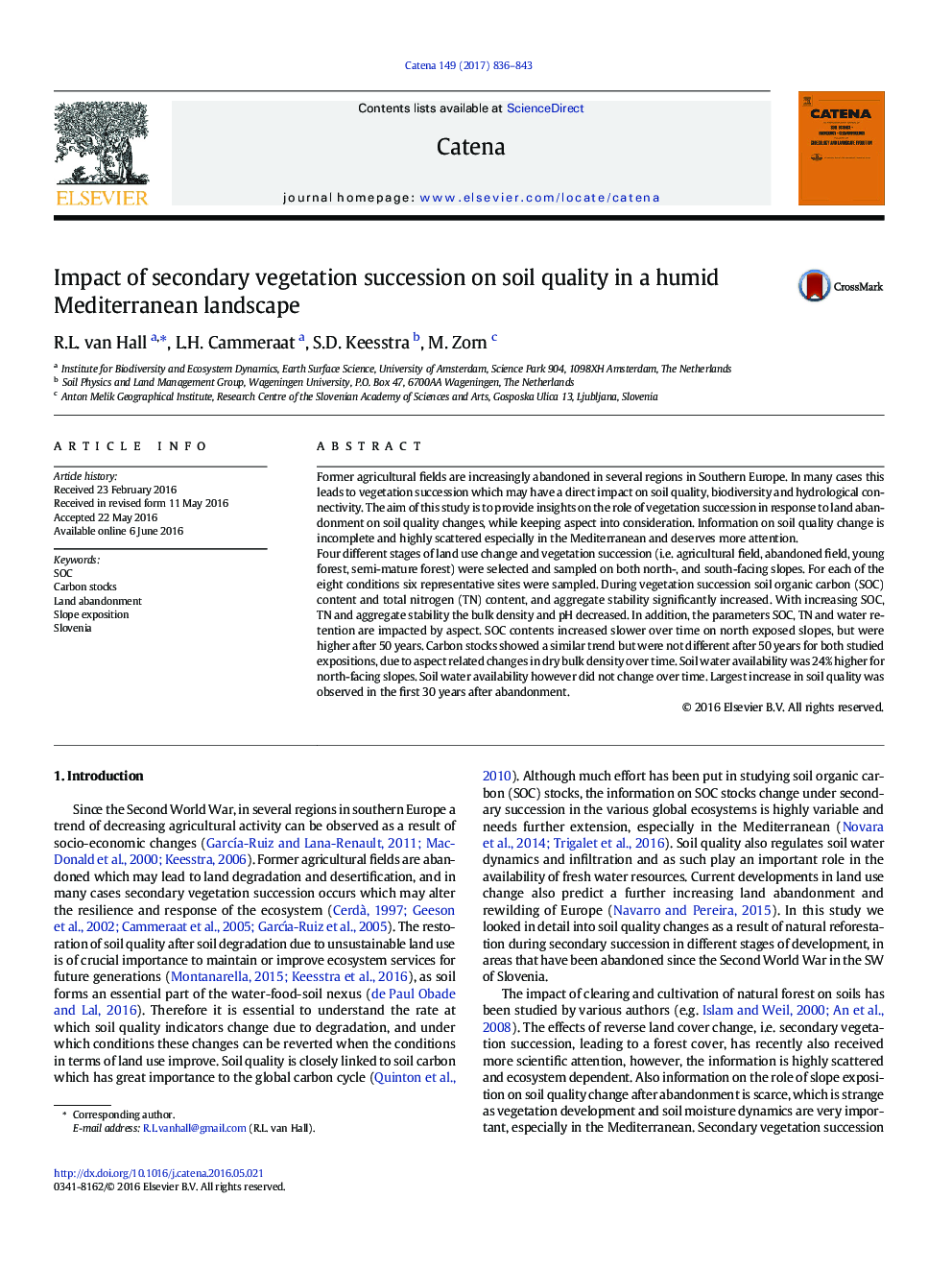| Article ID | Journal | Published Year | Pages | File Type |
|---|---|---|---|---|
| 5770113 | CATENA | 2017 | 8 Pages |
â¢Secondary vegetation succession caused significant increases of carbon and nitrogen.â¢Soil organic carbon and total nitrogen content increased faster on S exposed slopes.â¢Field capacity and final soil organic carbon content is higher on N exposed slopes.
Former agricultural fields are increasingly abandoned in several regions in Southern Europe. In many cases this leads to vegetation succession which may have a direct impact on soil quality, biodiversity and hydrological connectivity. The aim of this study is to provide insights on the role of vegetation succession in response to land abandonment on soil quality changes, while keeping aspect into consideration. Information on soil quality change is incomplete and highly scattered especially in the Mediterranean and deserves more attention.Four different stages of land use change and vegetation succession (i.e. agricultural field, abandoned field, young forest, semi-mature forest) were selected and sampled on both north-, and south-facing slopes. For each of the eight conditions six representative sites were sampled. During vegetation succession soil organic carbon (SOC) content and total nitrogen (TN) content, and aggregate stability significantly increased. With increasing SOC, TN and aggregate stability the bulk density and pH decreased. In addition, the parameters SOC, TN and water retention are impacted by aspect. SOC contents increased slower over time on north exposed slopes, but were higher after 50Â years. Carbon stocks showed a similar trend but were not different after 50Â years for both studied expositions, due to aspect related changes in dry bulk density over time. Soil water availability was 24% higher for north-facing slopes. Soil water availability however did not change over time. Largest increase in soil quality was observed in the first 30Â years after abandonment.
